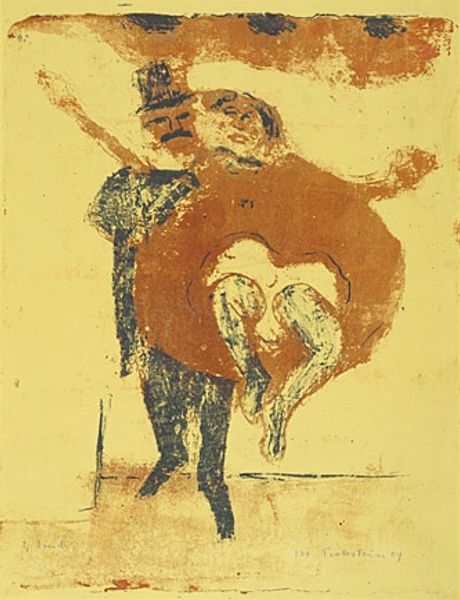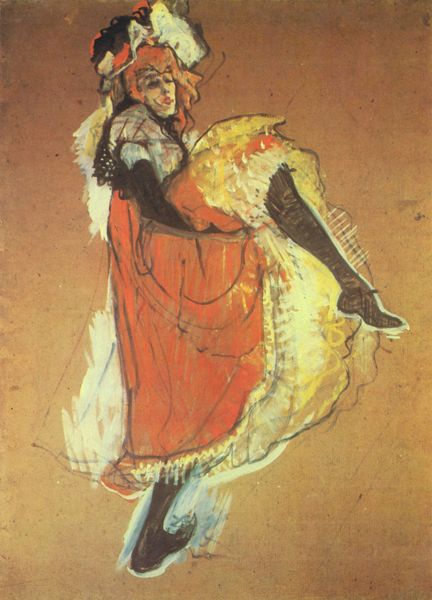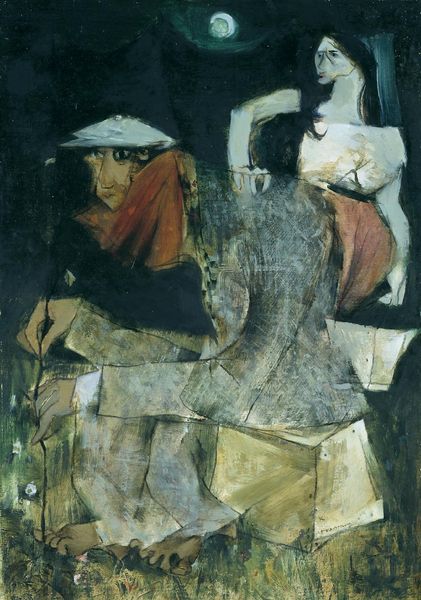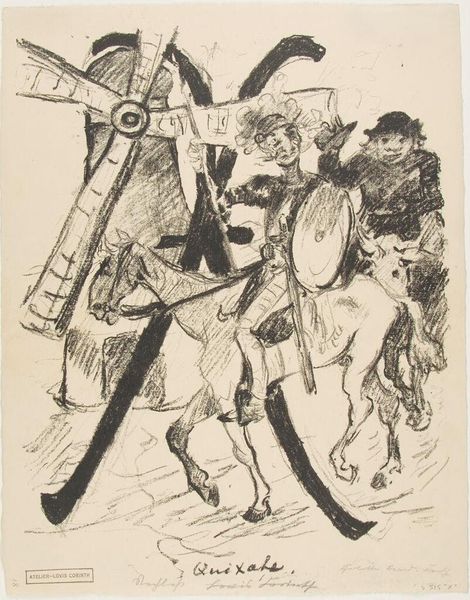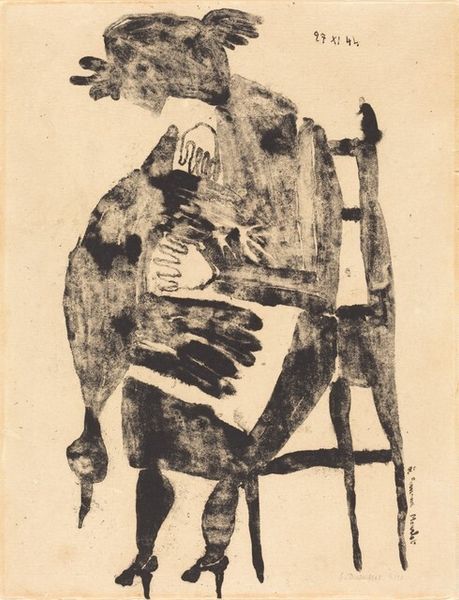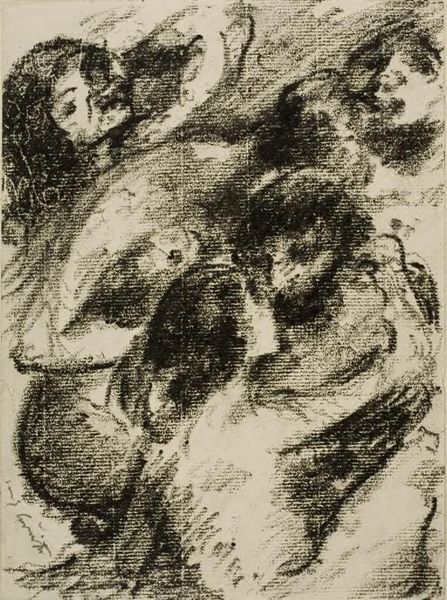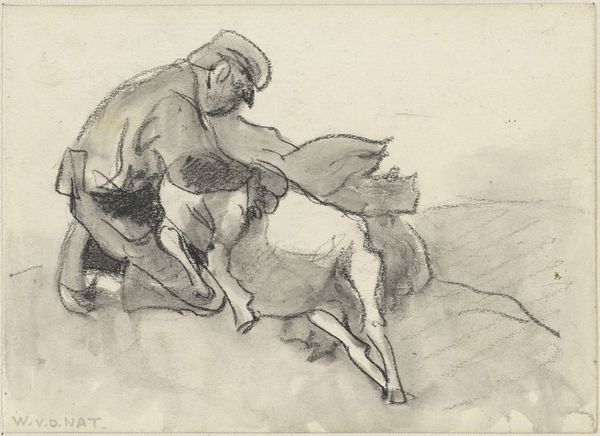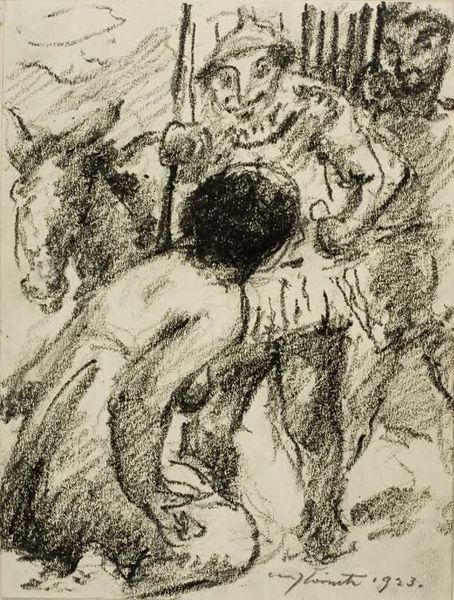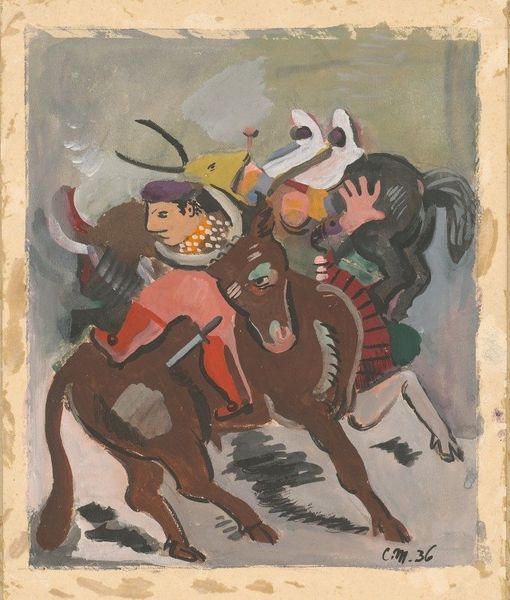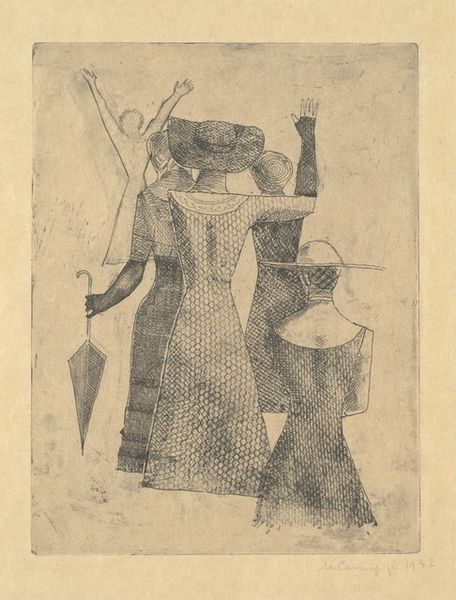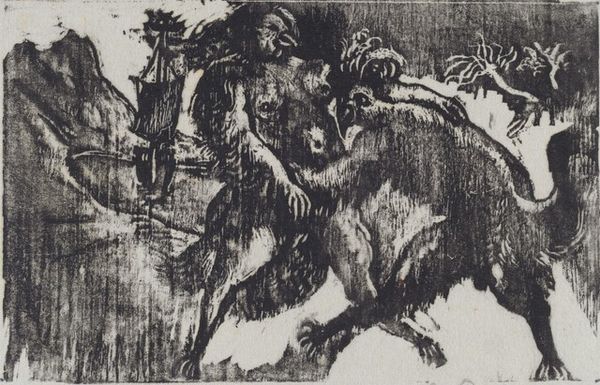
painting, gouache
#
portrait
#
gouache
#
painting
#
gouache
#
figuration
#
russian-avant-garde
#
genre-painting
#
realism
Copyright: Public domain US
Curator: Here we have Zinaida Serebriakova's 1917 gouache painting, "Study for painting 'Canvas whitening'". It depicts figures engaged in what looks like the process of preparing canvases. What are your initial impressions? Editor: My immediate reaction is its incredible rawness. The stark whites and reds leap out against the unfinished sketch-like quality of the forms. There's something intensely material about their work. You can feel the effort in those bending figures. Curator: Indeed, Serebriakova's commitment to rendering the labor process is quite compelling, particularly in light of the broader avant-garde's interest in redefining artistic production during that time. Her focus on these working women directly challenges conventional subjects depicted in the established art institutions of pre-revolutionary Russia. Editor: Absolutely. The material circumstances of canvas preparation, and the hands-on nature of this activity are all exposed. Notice the red headscarves worn by the women, and how their bodies, almost fragmented, are actively engaged in repetitive labor. Is the blanching of a canvas itself a symbolic act of erasure and beginning again? The social realism here becomes so clear. Curator: That's a very astute point about erasure. I think considering her social position at the time, she probably saw it also from her family perspective: she was a part of an artistic family, but one could argue her position within it was diminished by the expectations placed on female artists in her milieu. Perhaps Serebriakova is trying to subvert that and foreground the collective material practice over the singular genius? Editor: That is fascinating. How do you view this painting in terms of its relation to similar subjects treated during the same period? The use of gouache makes it really earthy. It’s the materiality of the everyday represented via everyday materials, in a sense democratizing both process and subject. Curator: Right, and this "democratization" resonates with the revolutionary fervor that was gripping Russia. One sees her focus in genre painting that aimed at elevating common folks from merely decorative themes. These artworks provide invaluable insight on pre-revolution society in Russia. Editor: Thank you. Now looking closer at how she represents this crucial work of the painting production, I definitely see more than an unassuming portrait. Curator: Agreed. A humble portrayal, but powerful in its articulation of working class production and the artist's response.
Comments
No comments
Be the first to comment and join the conversation on the ultimate creative platform.
